Featured Non-Fiction & Biography
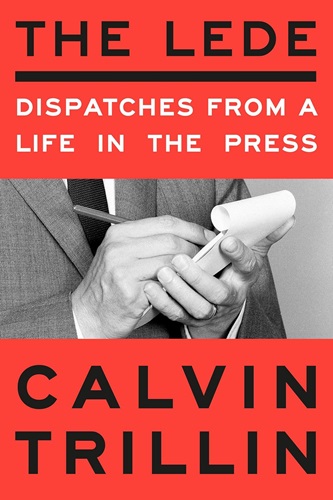
THE LEDE
by Calvin Trillin
A fascinating portrait of journalism and the people who make it, told through pieces collected from the incomparable six-decade career of bestselling author and longtime New Yorker writer Calvin Trillin
“The Lede contains profiles . . . that are acknowledged classics of the form and will be studied until A.I. makes hash out of all of us.”—Dwight Garner, The New York Times
I’ve been writing about the press almost as long as I’ve been in the game. At some point, it occurred to me that disparate pieces from various places in various styles amounted to a picture from multiple angles of what the press has been like over the years since I became a practitioner and an observer.
Calvin Trillin has reported serious pieces across America for The New Yorker, covered the civil rights movement in the South for Time, and written comic verse for The Nation. But one of his favorite subjects over the years—a superb fit for his unique combination of reportage and humor—has been his own professional environment: the American press.
In The Lede, Trillin gathers his incisive, often hilarious writing on reporting, reporters, and their world. There are pieces on a legendary crime reporter in Miami and on an erudite film critic in Dallas who once a week transformed himself from a connoisseur of the French nouvelle vague into a fan of movies like Mother Riley Meets the Vampire. Trillin writes about the paucity of gossip columns in Russia, the icebreaker he’d use if he met one of his subjects socially (e.g.: “You must be wondering why I referred to you in Time as a dork robot”), and the origins of a publication called Beautiful Spot: A Magazine of Parking.
Uniting all of this is Trillin’s signature combination of empathy, humor, and graceful prose. The Lede is an invaluable portrait of one our fundamental American institutions from a master journalist.

2020
by Eric Klinenberg
A meticulously reported, character-driven, unforgettable investigation of a time when nothing was certain and everything was at stake, by the acclaimed sociologist and best-selling author Eric Klinenberg
“A gripping, deeply moving account of a signal year in modern history, told through the stories of seven ordinary people. Klinenberg’s narrative shows how the legacy of that year continues to shape us, our politics and our personal lives.”—Siddhartha Mukherjee, Pulitzer Prize-winning author of The Emperor of All Maladies
2020 will go down alongside 1914, 1929, and 1968 as one of the most consequential years in history. This riveting and affecting book is the first attempt to capture the full human experience of that fateful time.
At the heart of 2020 are seven vivid profiles of ordinary New Yorkers—including an elementary school principal, a bar manager, a subway custodian, and a local political aide—whose experiences illuminate how Americans, andpeople across the globe, reckoned with 2020. Through these poignant stories, we revisit our own moments of hope and fear, the profound tragedies and losses in our communities, the mutual aid networks that brought us together, and the social movements that hinted at the possibilities of a better world.
Eric Klinenberg vividly captures these stories, casting them against the backdrop of a high-stakes presidential election, a surge of misinformation, rising distrust, and raging protests. We move from the epicenter in New York City to Washington and London, where political leaders made the crisis so much more lethal than it had to be. We bear witness to epidemiological battles in Wuhan and Beijing, along with the initiatives of scientists, citizens, and policy makers in Australia, Japan, and Taiwan, who worked together to save lives.
Klinenberg allows us to see 2020—and, ultimately, ourselves—with unprecedented clarity and empathy. His book not only helps us reckon with what we lived through, but also with the challenges we face before the next crisis arrives.


ALL IN HER HEAD
by Elizabeth Comen, M.D.
A surprising, groundbreaking, and fiercely entertaining medical history that is both a collective narrative of women’s bodies and a call to action for a new conversation around women’s health.
For as long as medicine has been a practice, women’s bodies have been treated like objects to be practiced on: examined and ignored, idealized and sexualized, shamed, subjugated, mutilated, and dismissed. The history of women’s healthcare is a story in which women themselves have too often been voiceless—a narrative instead written from the perspective of men who styled themselves as authorities on the female of the species, yet uninformed by women’s own voices, thoughts, fears, pain and experiences. The result is a cultural and societal legacy that continues to shape the (mis)treatment and care of women.
While the modern age has seen significant advancements in the medical field, the notion that female bodies are flawed inversions of the male ideal lingers on—as do the pervasive societal stigmas and lingering ignorance that shape women’s health and relationships with their own bodies.
Memorial Sloan Kettering oncologist and medical historian Dr. Elizabeth Comen draws back the curtain on the collective medical history of women to reintroduce us to our whole bodies—how they work, the actual doctors and patients whose perspectives and experiences laid the foundation for today’s medical thought, and the many oversights that still remain unaddressed. With a physician’s knowledge and empathy, Dr. Comen follows the road map of the eleven organ systems to share unique and untold stories, drawing upon medical texts and journals, interviews with expert physicians, as well as her own experience treating thousands of women.
Empowering women to better understand ourselves and advocate for care that prioritizes healthy and joyful lives— for us and generations to come—All in Her Head is written with humor, wisdom, and deep scientific and cultural insight. Eye-opening, sometimes enraging, yet always captivating, this shared memoir of women’s medical history is an essential contribution to a holistic understanding and much-needed reclaiming of women’s history and bodies.


MY SIDE OF THE RIVER
by Elizabeth Camarillo Gutierrez
A Goodreads Most Anticipated Book of 2024
“My Side of the River is both fierce and poetic. It brilliantly reframes border writing while embracing nature and familial history. There are moments one sees greatness appear. This is one of those moments.” ―Luis Alberto Urrea, New York Times bestselling author of Good Night, Irene
Elizabeth Camarillo Gutierrez reveals her experience as the U.S. born daughter of immigrants and what happened when, at fifteen, her parents were forced back to Mexico in this captivating and tender memoir.
Born to Mexican immigrants south of the Rillito River in Tucson, Arizona, Elizabeth had the world at her fingertips. She was preparing to enter her freshman year of high school as the number one student when suddenly, her own country took away the most important right a child has: the right to have a family.
When her parents’ visas expired and they were forced to return to Mexico, Elizabeth was left responsible for her younger brother, as well as her education. Determined to break the cycle of being a “statistic,” she knew that even though her parents couldn’t stay, there was no way she could let go of the opportunities the U.S. could provide. Armed with only her passport and sheer teenage determination, Elizabeth became what her school would eventually describe as an unaccompanied homeless youth, one of thousands of underage victims affected by family separation due to broken immigration laws.
For fans of Educated by Tara Westover and The Distance Between Us by Reyna Grande, My Side of the River explores separation, generational trauma, and the toll of the American dream. It’s also, at its core, a love story between a brother and a sister who, no matter the cost, is determined to make the pursuit of her brother’s dreams easier than it was for her.
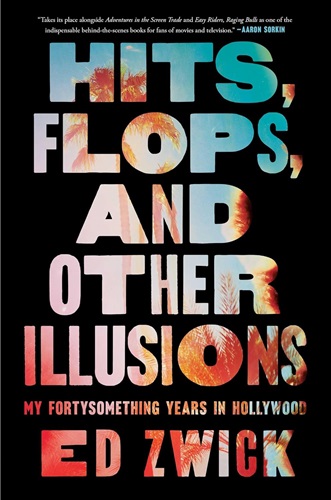

HITS, FLOPS, AND OTHER ILLUSIONS
by Ed Zwick
This heartfelt and wry career memoir from the director of Blood Diamond, The Last Samurai, Legends of the Fall, About Last Night, and Glory, creator of the show thirtysomething, and executive producer of My So-Called Life, gives a dishy, behind-the-scenes look at working with some of the biggest names in Hollywood.
“I’ll be dropping a few names,” Ed Zwick confesses in the introduction to his book. “Over the years I have worked with self-proclaimed masters-of-the-universe, unheralded geniuses, hacks, sociopaths, savants, and saints.”
He has encountered these Hollywood types during four decades of directing, producing, and writing projects that have collectively received eighteen Academy Award nominations (seven wins) and sixty-seven Emmy nominations (twenty-two wins). Though there are many factors behind such success, including luck and the contributions of his creative partner Marshall Herskovitz, he’s known to have a special talent for bringing out the best in the people he’s worked with, especially the actors. In those intense collaborations, he’s sought to discover the small pieces of connective tissue, vulnerability, and fellowship that can help an actor realize their character in full.
Talents whom he spotted early include Brad Pitt, Matt Damon, Denzel Washington, Claire Danes, and Jared Leto. Established stars he worked closely with include Leonardo DiCaprio, Anthony Hopkins, Tom Cruise, Julia Roberts, Anne Hathaway, Daniel Craig, Jake Gyllenhaal, Bruce Willis, Demi Moore, and Jennifer Connelly. He also sued Harvey Weinstein over the production of Shakespeare in Love—and won.He shares personal stories about all these people, and more.
Written mostly with love, sometimes with rue, this memoir is also a meditation on working, sprinkled throughout with tips for anyone who has ever imagined writing, directing, or producing for the screen. Fans with an appreciation for the beautiful mysteries—as well as the unsightly, often comic truths—of crafting film and television won’t want to miss it.


WHAT HAVE WE HERE
by Billy Dee Williams
A film legend recalls his remarkable life of nearly eight decades—a heralded actor who’s played the roles he wanted, from Brian’s Song to Lando in the Star Wars universe—unchecked by the racism and typecasting so rife in the mostly all-white industry in which he triumphed.
“The story of a legend, written by the legend himself! Impressive, inspiring, entertaining and endearing.” —J. J. Abrams
Billy Dee Williams was born in Harlem in 1937 and grew up in a household of love and sophistication. As a young boy, he made his stage debut working with Lotte Lenya in an Ira Gershwin/Kurt Weill production where Williams ended up feeding Lenya her lines. He studied painting, first at the High School of Music and Art, with fellow student Diahann Carroll, and then at the National Academy of Fine Art, before setting out to pursue acting with Herbert Berghoff, Stella Adler, and Sidney Poitier.
His first film role was in The Last Angry Man, the great Paul Muni’s final film. It was Muni who gave Billy the advice that sent him soaring as an actor, “You can play any character you want to play no matter who you are, no matter the way you look or the color of your skin.” And Williams writes, “I wanted to be anyone I wanted to be.”
He writes of landing the role of a lifetime: co-starring alongside James Caan in Brian’s Song, the made-for-television movie that was watched by an audience of more than fifty million people. Williams says it was “the kind of interracial love story America needed.”
And when, as the first Black character in the Star Wars universe, he became a true pop culture icon, playing Lando Calrissian in George Lucas’s The Empire Strikes Back (“What I presented on the screen people didn’t expect to see”). It was a role he reprised in the final film of the original trilogy, The Return of the Jedi, and in the recent sequel The Rise of Skywalker.
A legendary actor, in his own words, on all that has sustained and carried him through a lifetime of dreams and adventure.
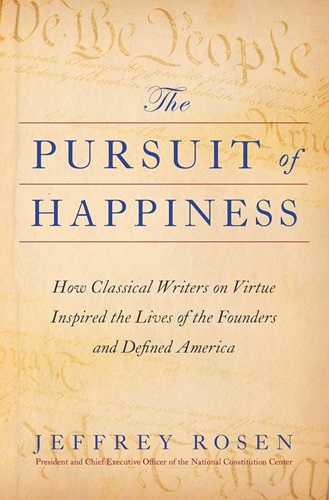

THE PURSUIT OF HAPPINESS
by Jeffrey Rosen
A fascinating examination of what “the pursuit of happiness” meant to our nation’s Founders and how that famous phrase defined their lives and became the foundation of our democracy.
The Declaration of Independence identified “the pursuit of happiness” as one of our unalienable rights, along with life and liberty. Jeffrey Rosen, the president of the National Constitution Center, profiles six of the most influential founders—Benjamin Franklin, George Washington, John Adams, Thomas Jefferson, James Madison, and Alexander Hamilton—to show what pursuing happiness meant in their lives.
By reading the classical Greek and Roman moral philosophers who inspired the Founders, Rosen shows us how they understood the pursuit of happiness as a quest for being good, not feeling good—the pursuit of lifelong virtue, not short-term pleasure. Among those virtues were the habits of industry, temperance, moderation, and sincerity, which the Founders viewed as part of a daily struggle for self-improvement, character development, and calm self-mastery. They believed that political self-government required personal self-government. For all six Founders, the pursuit of virtue was incompatible with enslavement of African Americans, although the Virginians betrayed their own principles.
The Pursuit of Happiness is more than an elucidation of the Declaration’s famous phrase; it is a revelatory journey into the minds of the Founders, and a deep, rich, and fresh understanding of the foundation of our democracy.
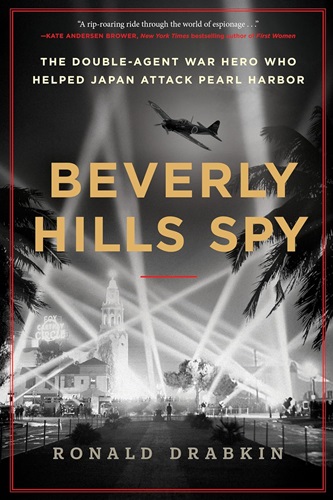

BEVERLY HILLS SPY
by Ronald Drabkin
“A beguiling tale of espionage and double-dealing in the years leading up to World War II. … Strap in for a narrative that demands a suspension of disbelief—and richly rewards it.” —Kirkus Reviews (starred review); Best Books of February Selection
The untold story of the World War I hero who became a fixture of high society in Golden Age Hollywood—all while acting as a double agent for the Japanese Empire as it prepared to attack Pearl Harbor
Frederick Rutland’s story is a rags-to-riches coup for the ages—a lower-class boy from England bootstraps his way up the ranks of the British military, becoming a World War I pilot, father of the modern aircraft carrier, cosmopolitan businessman, and Hollywood A-list insider. He oversaw this small empire from his mansion on the fabled Bird Streets of Beverly Hills. Snubbed for promotion in the Royal Air Force due to little more than jealousy and class politics, Rutland—to all appearances—continued to spin gold from straw, living an enviably lavish lifestyle that included butlers, wild parties, private clubs, and newsworthy living . . .
. . . and it was all funded by the Japanese Empire.
Beverly Hills Spy reveals the story of Rutland’s life of espionage on behalf of the Axis, selling secrets about fleet and aircraft design to the Japanese Imperial Navy that would be instrumental in its ability to attack Pearl Harbor, while collecting a salary ten times larger than the best-paid Japanese admirals. Based on recently declassified FBI files and until-now untranslated documents from Japanese intelligence, Ronald Drabkin brings the scope of this unforgettable tale into full focus for the first time. Rutland hides in plain sight, rubbing elbows with Amelia Earhart and hosting galas and fundraisers with superstars like Charlie Chaplin and Boris Karloff, while simultaneously passing information to Japan through spy networks across North and Central America. Countless opportunities to catch Rutland in the act are squandered by the FBI, British Intelligence, and US Naval Intelligence alike as he uses his cunning and charm to misdirect and cast shadows of doubt over his business dealings, allowing him to operate largely unfettered for years.
In the end, whether he fully intends to or not, Rutland sets in motion world events that are so monumental, their consequences are still being felt today.
Beverly Hills Spy is a masterpiece of research on spy craft, a shocking narrative about an unknown but pivotal figure in history, and brings new information to light that helps us understand how Pearl Harbor happened—and how it could have been prevented.


THE HAMMER
by Hamilton Nolan
A timely, in-depth, and vital exploration of the American labor movement and its critical place in our society and politics today, from acclaimed labor reporter Hamilton Nolan.
Inequality is America’s biggest problem. Unions are the single strongest tool that working people have to fix it. Organized labor has been in decline for decades. Yet it sits today at a moment of enormous opportunity. In the wake of the pandemic, a highly visible wave of strikes and new organizing campaigns have driven the popularity of unions to historic highs. The simmering battle inside of the labor movement over how to tap into its revolutionary potential—or allow it to be squandered—will determine the economic and social course of American life for years to come.
In chapters that span the country, Nolan shows readers the actual places where labor and politics meld. He highlights how organized labor can and does wield power effectively: a union that dominates Las Vegas and is trying to scale nationally; a successful decades-long campaign to organize California’s child care workers; the human face of a surprising strike of factory workers trying to preserve their pathway to the middle class. Throughout, Nolan follows Sara Nelson, the fiery and charismatic head of the flight attendants’ union, as she struggles with how (and whether) to assert herself as a national leader, to try to fix what is broken. The Hammer draws the line from forgotten workplaces in rural West Virginia to Washington’s halls of power, and shows how labor solidarity can utterly transform American politics—if it can first transform itself.
A labor journalist for more than a decade, Nolan helped unionize his own industry. The Hammer is a urgent on-the-ground excavation of the past, present, and future of the American labor movement.
Still Hot in Non-Fiction & Biography
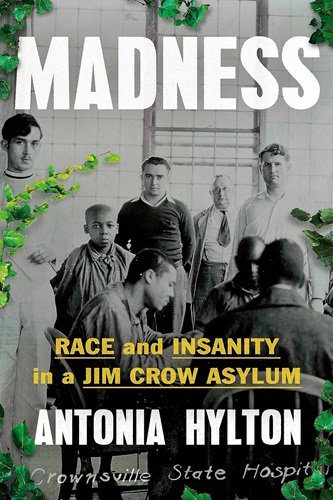

MADNESS
by Antonia Hylton
New York Times Bestseller
Amazon Editor’s Pick for Best Books of January
In the tradition of The Immortal Life of Henrietta Lacks, a page-turning 93-year history of Crownsville Hospital, one of the nation’s last segregated asylums, that the New York Times described as “fascinating…meticulous research” and bestselling author Clint Smith endorsed it as “a book that left me breathless.”
On a cold day in March of 1911, officials marched twelve Black men into the heart of a forest in Maryland. Under the supervision of a doctor, the men were forced to clear the land, pour cement, lay bricks, and harvest tobacco. When construction finished, they became the first twelve patients of the state’s Hospital for the Negro Insane. For centuries, Black patients have been absent from our history books. Madness transports readers behind the brick walls of a Jim Crow asylum.
In Madness, Peabody and Emmy award-winning journalist Antonia Hylton tells the 93-year-old history of Crownsville Hospital, one of the last segregated asylums with surviving records and a campus that still stands to this day in Anne Arundel County, Maryland. She blends the intimate tales of patients and employees whose lives were shaped by Crownsville with a decade-worth of investigative research and archival documents. Madness chronicles the stories of Black families whose mental health suffered as they tried, and sometimes failed, to find safety and dignity. Hylton also grapples with her own family’s experiences with mental illness, and the secrecy and shame that it reproduced for generations.
As Crownsville Hospital grew from an antebellum-style work camp to a tiny city sitting on 1,500 acres, the institution became a microcosm of America’s evolving battles over slavery, racial integration, and civil rights. During its peak years, the hospital’s wards were overflowing with almost 2,700 patients. By the end of the 20th-century, the asylum faded from view as prisons and jails became America’s new focus.
In Madness, Hylton traces the legacy of slavery to the treatment of Black people’s bodies and minds in our current mental healthcare system. It is a captivating and heartbreaking meditation on how America decides who is sick or criminal, and who is worthy of our care or irredeemable.
National Indie Bestseller
ELLE Magazine’s Best (and Most Anticipated) Nonfiction Books of 2024
Entertainment Weekly’s Best Books to Read 2024


ONE IN A MILLENIAL
by Kate Kennedy
INSTANT NEW YORK TIMES BESTSELLER
NATIONAL BESTSELLER
From pop culture podcaster and a voice of a generation, Kate Kennedy, a celebration of the millennial zeitgeist
One In a Millennial is an exploration of pop culture, nostalgia, the millennial zeitgeist, and the life lessons learned (for better and for worse) from coming of age as a member of a much-maligned generation.
Kate is a pop culture commentator and host of the popular millennial-focused podcast Be There in Five. Part-funny, part-serious, Kate navigates the complicated nature of celebrating and criticizing the culture that shaped her as a woman, while arguing that great depths can come from surface-level interests.
With her trademark style and vulnerability, One In a Millennial is sharp, hilarious, and heartwarming all at once. She tackles AOL Instant Messenger, purity culture, American Girl Dolls, going out tops, Spice Girl feminism, her feelings about millennial motherhood, and more. Kate’s laugh-out-loud asides and keen observations will have you nodding your head and maybe even tearing up.
As an Amazon Associate, we may earn money from qualifying purchases.


